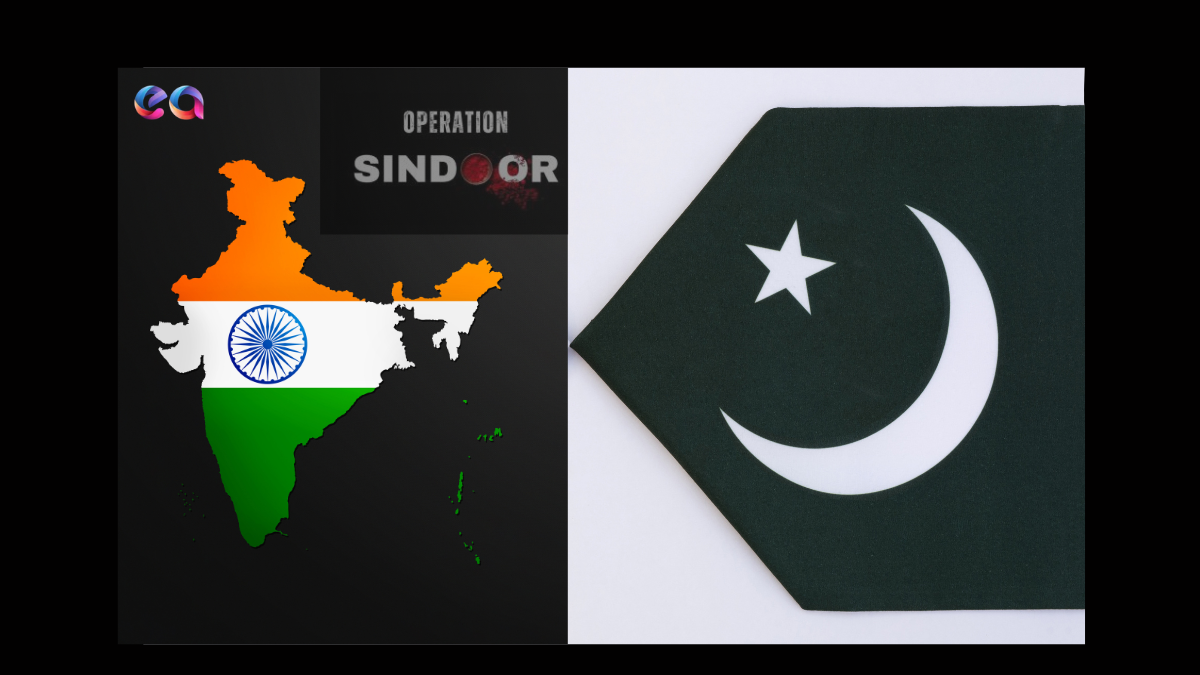
In mid-May 2025, the already dangerously frayed relationship between India and Pakistan suffered further degradation with the reciprocal expulsion of diplomats. On May 13, 2025, India’s Ministry of External Affairs (MEA) declared an official from the Pakistan High Commission in New Delhi persona non grata, mandating their departure within 24 hours. Pakistan swiftly retaliated, with its Ministry of Foreign Affairs expelling a staff member of the Indian High Commission in Islamabad under similar terms on or around May 14, 2025. These actions, while not unprecedented in the turbulent history of Indo-Pakistani relations, occurred against the ominous backdrop of a severe military confrontation that had erupted earlier in the month, described by observers as one of the most serious escalations in decades.
The expulsions, therefore, cannot be viewed as isolated diplomatic maneuvers. They are symptomatic of a profound crisis characterized by intense military exchanges, including missile and drone attacks, and a near-total breakdown of bilateral engagement. This report will argue that the May 2025 diplomatic expulsions, occurring in the shadow of active hostilities and a fragile ceasefire, underscore a perilous erosion of established diplomatic norms and communication channels. More critically, they signal a potential shift where traditional “red lines” and conflict management mechanisms are being dangerously tested, if not disregarded, pushing the nuclear-armed neighbors into an increasingly unpredictable and unstable strategic environment.
The timing of these expulsions, coming shortly after a ceasefire was ostensibly agreed upon around May 10, 2025 , is particularly instructive. It suggests that the momentum of diplomatic fallout can outpace, or even actively undermine, attempts at military de-escalation. Even as overt military actions paused, the underlying grievances and, significantly, the clandestine operations of intelligence agencies continued unabated. The common justification for the expulsions – “activities not in keeping with official status” or “activities incompatible with privileged status” , widely understood as euphemisms for espionage – points to an ongoing shadow war. This intelligence contest runs parallel to, and demonstrably influences, overt diplomatic and military relations, creating fresh flashpoints that render ceasefires exceedingly fragile and susceptible to rapid collapse. In this charged atmosphere, diplomatic expulsions transform from a routine tool of censure into a public and symbolic continuation of hostilities by other means, risking misinterpretation as precursors to renewed military conflict rather than mere diplomatic signaling.
Table of Contents
The Preceding Storm: Military Escalation and Diplomatic Breakdown (April-May 2025)
The diplomatic expulsions of mid-May 2025 were not an abrupt development but the culmination of weeks of rapidly escalating military and diplomatic confrontations. The crisis was ignited by a deadly attack and spiraled through retaliatory military operations, significant diplomatic ruptures, and a tenuous ceasefire, setting a grim stage for the subsequent declarations of persona non grata.
The Spark: Pahalgam Tourist Attack (April 22, 2025)
The immediate catalyst for the sharp downturn in relations was a brutal attack on April 22, 2025, in the Baisaran valley near Pahalgam, a resort town in Indian-administered Kashmir. Unidentified gunmen opened fire on a group of tourists, killing 26 individuals – predominantly Hindu Indian nationals and one Nepali citizen – and injuring at least 17 others. This incident was described as the deadliest assault on civilians in India since the 2008 Mumbai attacks, underscoring its profound impact. India promptly accused Pakistan-backed militants, specifically a group called Kashmir Resistance, which New Delhi alleges is linked to Lashkar-e-Taiba. Pakistan, in turn, denied any involvement in the attack. The Pahalgam massacre immediately heightened tensions, with Indian leadership vowing a strong response and setting the stage for military retaliation.
India’s Retaliation: “Operation Sindoor” (May 7, 2025)
On May 7, 2025, the Indian Armed Forces launched a series of strikes codenamed “Operation Sindoor”. India stated that this operation targeted nine militant hideouts and terrorist infrastructure sites across Pakistan-administered Kashmir (PoK) and, significantly, in Pakistan proper, including locations in Bahawalpur and Muridke in Punjab province. The Indian government characterized these strikes as “focused, measured, and non-escalatory,” aimed at the camps of Jaish-e-Mohammed (JeM) and Lashkar-e-Taiba (LeT). Advanced weaponry, reportedly including Rafale aircraft equipped with SCALP missiles and AASM Hammer glide bombs, BrahMos cruise missiles, and Indo-Israeli SkyStriker loitering munitions, were employed. India initially claimed that no Pakistani military facilities were targeted , and later announced that “Operation Sindoor” had resulted in the elimination of over 100 terrorists, including several high-value targets. Defence Minister Rajnath Singh asserted that the operation’s impact was felt as far as Rawalpindi, the headquarters of the Pakistani Army.
The decision to launch large-scale conventional military operations, including strikes inside undisputed Pakistani territory like Punjab , marked a notable departure from some past crises where responses were often more localized or primarily diplomatic. This action suggested a potentially lowered threshold for military engagement by India, possibly driven by domestic political considerations, a perceived conventional military advantage, or a strategic reassessment of escalation dynamics with Pakistan. This set a more aggressive precedent for future confrontations.
Pakistan’s Counter-Offensive and Escalation (May 7-10, 2025)
Pakistan vehemently contested India’s version of events. Islamabad denied that “Operation Sindoor” solely targeted militant camps, asserting that Indian strikes hit civilian areas, including mosques, leading to the deaths of 31 Pakistani civilians. Pakistani Prime Minister Shehbaz Sharif condemned the Indian action as an “act of war” and vowed retaliation.
On May 10, Pakistan launched its own retaliatory military operation, codenamed “Operation Bunyan-un-Marsoos,” which it claimed targeted several Indian military bases. India, conversely, accused Pakistan of targeting Indian civilian areas and Hindu religious sites during its counter-offensive. This period, from May 7 to May 10, witnessed intense cross-border skirmishes, heavy artillery fire, and reciprocal missile and drone attacks, marking the first significant drone battle between the two nuclear-armed nations. Pakistan also claimed to have shot down several Indian fighter jets, including a Dassault Rafale, with some unofficial corroboration from unnamed US and French intelligence sources, though India did not officially confirm these losses beyond acknowledging some aircraft crashes due to unknown causes. The introduction of drone warfare on this scale represented a significant technological escalation, adding new layers of complexity regarding attribution, deniability, and the potential for rapid, unmanned escalation pathways.
Diplomatic Ruptures Preceding Expulsions
The military confrontation was paralleled by a swift and severe breakdown in diplomatic relations, initiated well before the May 7 strikes. Following the Pahalgam attack, India took several stringent measures: it downgraded diplomatic ties, ordered the closure of the Attari-Wagah land border crossing (the only functional one), suspended visas for Pakistani nationals, and, most critically, announced the suspension of its participation in the Indus Waters Treaty of 1960. The Indus Waters Treaty, a World Bank-brokered agreement governing water sharing from the Indus river system, had survived previous wars and major skirmishes, making its suspension a particularly grave step. India indicated the suspension would remain until Pakistan took credible action against cross-border terrorism. For Pakistan, a lower riparian state heavily dependent on these waters, this move was perceived as an “act of war” and a weaponization of a shared resource, signaling an “all-out” approach by India beyond traditional military and diplomatic pressures.
Pakistan reciprocated with its own set of diplomatic and economic sanctions. It closed its airspace to all Indian-owned or operated airlines, suspended all bilateral trade (including transit trade to third countries), and cancelled visas for Indian nationals. Further, India had already mandated a reduction of Pakistan’s High Commission staff in New Delhi from 55 to 30 personnel, specifically expelling all Defence, Naval, and Air advisors and giving them a week to leave. Pakistan undertook reciprocal withdrawals of its diplomatic staff. These earlier expulsions and staff reductions significantly diminished the diplomatic presence on both sides even before the May 13-14 expulsions.
A Tenuous Ceasefire (May 10, 2025)
After three days of intense military exchanges that raised fears of a wider war, India and Pakistan agreed to a ceasefire, effective from the evening of May 10, 2025. This agreement was reportedly reached following communication between the Directors General of Military Operations (DGMOs) of both armies and involved mediation efforts, notably by the United States. The United Nations Secretary-General welcomed the ceasefire as a “positive step”.
However, the truce proved exceedingly fragile from the outset. Within hours and in the subsequent days, both India and Pakistan accused each other of violating the ceasefire with renewed firing and shelling along the Line of Control (LoC) and international border. India reported ceasefire violations by Pakistan on the night of May 10-11, leading to precautionary blackouts in border areas of Rajasthan. These immediate breaches underscored the profound mistrust between the two sides and the immense difficulty in disengaging forces once kinetic operations had commenced. It also suggested that elements on either side might not have been fully under central command or could have been actively working to sabotage de-escalation efforts, highlighting the risk of accidental re-escalation.
| Date (2025) | Event | Key Actor(s) | Snippet(s) Reference |
| April 22 | Terrorist attack in Pahalgam, Kashmir; 26 tourists killed. | Militants | |
| April 23 | India downgrades diplomatic ties, moves to suspend Indus Waters Treaty, closes Attari-Wagah border. | India | |
| April 23 onwards | India expels 25 Pakistani diplomats, including military attaches, reducing mission strength to 30. | India | |
| April 24 | India & Pakistan cancel visas for each other’s nationals. Pakistan closes airspace, suspends trade. | India, Pak. | |
| May 7 | India launches “Operation Sindoor” targeting alleged militant camps in PoK and Pakistan. | India | |
| May 7-10 | Pakistan claims Indian strikes hit civilian areas. Intense cross-border firing, missile & drone attacks. | India, Pak. | |
| May 10 | Pakistan launches retaliatory “Operation Bunyan-un-Marsoos” targeting alleged Indian military bases. | Pakistan | |
| May 10 | India-Pakistan DGMOs agree to a ceasefire, reportedly U.S.-brokered. | India, Pak. | |
| May 10-12 | Both sides accuse each other of ceasefire violations. | India, Pak. | |
| May 13-14 | India expels Pakistani diplomat; Pakistan reciprocates by expelling Indian diplomat. | India, Pak. |
Persona Non Grata: The Diplomatic Battleground (May 13-14, 2025)
Against the backdrop of a fragile ceasefire and simmering military tensions, the diplomatic front witnessed a sharp escalation with the reciprocal expulsions of officials by India and Pakistan. These actions, centered around the declaration of persona non grata, became the new focal point of the ongoing confrontation.
India Expels Pakistani Diplomat
On May 13, 2025, the Indian Ministry of External Affairs (MEA) officially announced that an unnamed Pakistani official working at the Pakistan High Commission in New Delhi had been declared persona non grata. The MEA’s brief statement cited the reason as the official “indulging in activities not in keeping with his official status in India”. The diplomat was given 24 hours to leave the country, and a formal demarche outlining India’s concerns was issued to the Pakistani Charge d’Affaires in New Delhi.
While the official MEA statement was terse, sources within the Indian government and media reports provided further context, explicitly linking the expulsion to espionage activities. The Pakistani official was allegedly connected to recent arrests made by Punjab Police. These arrests involved individuals, including Guzala and Yameen Mohamad from Malerkotla, who were accused of leaking sensitive information regarding Indian Army movements to a Pakistan-based handler. Earlier, two other individuals, Falaksher Masih and Suraj Masih, had been arrested by Amritsar Rural Police for allegedly providing photographs of Army cantonment areas and airbases to Pakistan’s intelligence agency, with alleged links to the expelled diplomat. This expulsion reportedly brought the effective strength of the Pakistan High Commission in New Delhi down to 29 officials , a significant reduction from its earlier strength.
Pakistan’s Reciprocal Expulsion of Indian Diplomat
Pakistan’s response was swift and mirrored India’s action. On the same day, May 13, or early on May 14, 2025, Pakistan’s Ministry of Foreign Affairs (MoFA) declared a staff member of the Indian High Commission in Islamabad persona non grata. The stated justification was that the Indian official was “engaging in activities incompatible with his privileged status”. This official was also ordered to leave Pakistan within 24 hours. To convey this decision, the Indian Charge d’Affaires in Islamabad was summoned to the Pakistani MoFA and handed a demarche. Some Pakistani media outlets identified the expelled Indian diplomat as Shankar Reddy Chintala and reported that he was accused of espionage.
The near-simultaneous and almost identical nature of these expulsions, including the 24-hour departure ultimatum and the use of similar vague official justifications, points towards a well-established, albeit reactive, protocol in India-Pakistan diplomatic confrontations. This symmetry suggests that both foreign ministries likely maintain contingency plans for such retaliatory measures, indicating that these expulsions are an anticipated, almost scripted, element of their diplomatic playbook, ready for deployment when specific triggers, such as the arrest of alleged spies linked to a diplomat, occur.
The Significance of “Persona Non Grata
The declaration of a diplomat as persona non grata (Latin for “an unwelcome person”) is the most severe form of diplomatic censure a host country can employ against a foreign envoy. Governed by Article 9 of the Vienna Convention on Diplomatic Relations (1961), this provision allows a receiving state to declare any member of a diplomatic mission unwelcome at any time and without having to explain its decision, although reasons are often implied or communicated through informal channels or leaks. Once declared persona non grata, the individual loses their diplomatic immunity and is typically required to leave the host country within a specified timeframe, usually 24 to 72 hours.
This diplomatic tool has been frequently utilized by both India and Pakistan throughout their contentious history, particularly during periods of heightened political or military tension. Allegations of espionage are the most common underlying cause for such expulsions between the two nations. While the act of expelling a diplomat is primarily punitive and symbolic, it also serves practical purposes. It disrupts the intelligence-gathering capabilities of the opposing nation, however minimally, by forcing the recall of an alleged operative. Furthermore, it acts as a stark warning to the remaining diplomatic staff regarding the host country’s counter-intelligence vigilance and its readiness to take firm action against perceived hostile activities. The public announcement of these expulsions, especially during a fragile ceasefire and heightened nationalistic sentiment, also serves as a domestic signaling mechanism for both governments, allowing them to project an image of strength and a refusal to be intimidated, even if such actions complicate broader de-escalation efforts.
Beyond Expulsions: The Crumbling Diplomatic Edifice
The tit-for-tat expulsions of diplomats in mid-May 2025 were not isolated incidents but rather the latest manifestation of a broader and more systemic collapse of the diplomatic framework between India and Pakistan. This deterioration had been accelerating since the Pahalgam terrorist attack in late April, with both nations imposing a raft of measures that severely curtailed bilateral engagement across multiple domains.
The cumulative effect of these actions was the dismantling of various layers of bilateral engagement, creating a vacuum susceptible to misunderstanding, miscalculation, and escalating nationalist rhetoric. This makes future de-escalation efforts significantly more challenging. The targeting of long-standing agreements like the Indus Waters Treaty , an accord that had demonstrated remarkable resilience through previous conflicts, signaled a disturbing willingness to weaponize aspects of the relationship previously considered too critical or foundational to disrupt. This suggested a “gloves-off” approach to coercive diplomacy, where previously observed restraints were no longer guaranteed, dramatically increasing the unpredictability and potential scope of future confrontations. Furthermore, the comprehensive nature of the sanctions, directly impacting ordinary citizens through visa cancellations and economic actors via trade bans , served to impose broader societal costs beyond targeting state actors. Such measures risk deepening popular animosity, making reconciliation more difficult in the long term by creating a more hostile public opinion landscape for future leaders to navigate.
The following table summarizes the key diplomatic sanctions and measures imposed by both countries in the April-May 2025 period:
| Measure Category | India’s Actions | Pakistan’s Actions | Snippet(s) Reference |
| Diplomat Expulsions | Expelled 25 Pakistani diplomats (incl. military attaches) post-Pahalgam; 1 more on May 13. | Reciprocated earlier expulsions; expelled 1 Indian diplomat on May 13/14. | |
| High Commission Staff | Mandated reduction of Pakistan High Commission staff from 55 to 30 (then to 29). | Reciprocal reduction/withdrawal of Indian High Commission staff. | |
| Treaty Suspensions | Unilaterally suspended participation in Indus Waters Treaty (1960). | Condemned India’s IWT suspension as an “act of war.” | |
| Border Closures | Closed Attari-Wagah land border crossing. | (Implicitly maintained closure from its side). | |
| Visa Policies | Cancelled visas for Pakistani nationals; set departure deadlines. | Cancelled visas for Indian nationals; set departure deadlines. | |
| Airspace Restrictions | (No specific new restrictions by India mentioned beyond general heightened alert). | Closed its airspace to all Indian-owned or Indian-operated airlines. | |
| Trade Embargoes | Banned direct/indirect import of goods from Pakistan. | Suspended all trade with India, including transit trade to/from third countries. | |
| Maritime Restrictions | Barred Pakistani-flagged ships from Indian ports; prohibited Indian-flagged vessels from Pakistani ports. | (No specific new restrictions by Pakistan mentioned beyond general trade suspension). | |
| Mail/Communication | Suspended exchange of all mail from Pakistan (air/surface). | (Covered under broader trade/transport suspensions). |
These cumulative actions severely degraded both official and unofficial channels of communication. With High Commission strengths drastically reduced and routine interactions curtailed, direct dialogue became almost impossible, increasing reliance on public pronouncements, megaphone diplomacy, or the intervention of third-party intermediaries. This erosion of basic diplomatic infrastructure further isolated the two countries, making the bilateral relationship more brittle and prone to escalation.
Analysis: Red Lines Crossed, Stability Undermined
The events of April-May 2025, culminating in the reciprocal diplomatic expulsions, represent more than just another cyclical downturn in India-Pakistan relations. Expert assessments suggest a qualitative shift in the nature of the conflict, characterized by the crossing of previously respected, albeit often unstated, “red lines” and a significant undermining of regional stability. This period has potentially reshaped the strategic landscape between the two nuclear-armed neighbors, ushering in an era of heightened risk and unpredictability.
A consistent theme emerging from analyses is that the conflict has “obliterated old red lines”. This refers not only to the scale and nature of military actions, such as India’s “Operation Sindoor” striking targets deep within Pakistan’s Punjab province and the extensive use of missiles and drones by both sides , but also to diplomatic actions like India’s suspension of its participation in the Indus Waters Treaty. Such actions indicate that previously observed restraints, which formed a fragile basis for crisis management, may no longer be operative. This breakdown in shared understandings about limits makes it harder for each side to predict the other’s reactions, thereby increasing the likelihood of misjudgments that could spiral out of control.
Praveen Donthi, a senior analyst at the International Crisis Group, characterized the new dynamic as one of “armed coexistence,” where there is “little room for diplomacy and a narrow margin for error”. In such an environment, even accidental triggers or misinterpretations could rapidly escalate into a war-like situation, unconstrained by established guardrails. This state of “armed coexistence” implies a long-term condition of heightened military readiness and pervasive suspicion. Such a posture inevitably diverts critical national resources from development to defense and perpetuates a conflictual mindset that actively inhibits any meaningful peace initiatives, making it difficult for peace constituencies to emerge or gain traction.
The military operations of May 2025, particularly India’s “Operation Sindoor,” are seen by some strategists, like Srinath Raghavan, as establishing a new, more aggressive baseline for future Indian responses to perceived provocations. If large-scale conventional strikes become the expected Indian reaction, future Indian governments might feel compelled to replicate or even exceed this level of force to demonstrate resolve. This, in turn, could inadvertently lock India into a more escalatory posture, reducing its flexibility and potentially inviting more robust Pakistani counter-measures designed to deter this “new normal,” thereby risking an escalatory spiral.
The nuclear dimension, ever-present in India-Pakistan confrontations, has also been subject to re-evaluation. While both nations operated below the nuclear threshold during the May 2025 crisis, the increased willingness to take substantial risks in conventional conflict makes the region’s status as a nuclear flashpoint even more precarious. Indian Prime Minister Narendra Modi’s assertive rhetoric, warning that India would not tolerate “nuclear blackmail” and would strike “terrorist hideouts developing under the cover of nuclear blackmail” , aimed to carve out greater space for conventional military action. However, such statements risk misinterpretation by Pakistan and could inadvertently lower the nuclear threshold if Pakistan perceives that its conventional deterrence is being eroded and its strategic assets or core interests are threatened. This could compel Pakistan to signal its own nuclear red lines more assertively, making the nuclear equation more dangerous.
Furthermore, the crisis has, according to some experts like Christopher Clary, resurrected the “spectre of international intervention” in the Kashmir dispute, despite India’s long-standing preference for bilateral resolution. The active involvement of external powers in mediating the ceasefire points to this shift. The overall impact is a strategic environment characterized by heightened risk of miscalculation and unintended escalation, primarily due to degraded communication channels and profound, perhaps historic, levels of mistrust. The situation remains exceptionally volatile, where, as some analysts warn, a single major militant attack could potentially trigger a wider war with few, if any, diplomatic off-ramps.
The World Watches: International Reactions and Concerns
The intense military confrontation and diplomatic breakdown between India and Pakistan in April-May 2025 did not go unnoticed by the international community. The prospect of a full-blown war between two nuclear-armed states elicited significant concern and prompted diplomatic interventions from major global and regional powers.
The United States played a prominent, and reportedly pivotal, role in de-escalating the military crisis. Washington was credited with mediating the May 10 ceasefire between India and Pakistan. Then-U.S. President Donald Trump publicly claimed involvement in brokering the truce, suggesting that offers of trade concessions might have been part of the diplomatic efforts, although India disputed the linkage to trade. Regardless of the specifics, high-level contacts between Washington, New Delhi, and Islamabad were evident. The U.S. State Department formally welcomed the ceasefire, commending the leadership of both Prime Ministers for choosing peace and urging the maintenance of direct communication channels to preserve regional stability. Earlier in the crisis, then-U.S. Secretary of State Marco Rubio (a fictional name used in one news report, likely referring to the actual Secretary of State at the time) was reported to have made calls to senior officials in both India and Pakistan in an effort to defuse tensions.
The United Nations also voiced its concerns. UN Secretary-General Antonio Guterres issued calls for “maximum restraint” from both sides as the military conflict escalated, emphasizing that the world could not afford a military confrontation between India and Pakistan. Following the May 10 agreement, the Secretary-General formally welcomed the ceasefire as a positive development and stated that the United Nations stood ready to support efforts aimed at promoting peace and stability in the region. Early in the crisis, the UN had also urged both nations to “exercise maximum restraint”.
China, a major regional power with significant strategic interests and close ties with Pakistan, also engaged diplomatically. Beijing expressed its concern over the escalating tensions and urged both India and Pakistan to exercise calm and restraint. Chinese Foreign Minister Wang Yi reportedly spoke with his Pakistani counterpart, Ishaq Dar, and India’s National Security Adviser, Ajit Doval, to facilitate de-escalation. China officially welcomed the ceasefire agreement and expressed its readiness to play a constructive role in achieving a lasting peace between the two countries. Pakistani Prime Minister Shehbaz Sharif publicly thanked China, alongside the U.S. and other friendly nations, for their role in defusing the crisis.
Other nations, including Iran, which offered to mediate early in the crisis , and Middle Eastern countries such as Qatar, the UAE, Saudi Arabia, and Turkey, were also acknowledged by Pakistan for their diplomatic efforts.
The active mediation by the US and concerted communication by China underscore that major powers perceive the India-Pakistan flashpoint as a significant threat to their own interests and to global stability, compelling their intervention despite India’s traditional insistence on bilateralism in resolving disputes with Pakistan. The severity of the May 2025 crisis and the ever-present nuclear overhang likely necessitated a pragmatic, if reluctant, acceptance of external facilitation for de-escalation. This signals that when India-Pakistan tensions reach a critical threshold, the issue transcends bilateral confines and becomes a pressing global security concern.
The involvement of a diverse set of international actors – the US, China, and key Middle Eastern countries – suggests a multipolar diplomatic effort. This reflects the complex web of relationships that both India and Pakistan maintain with global and regional powers and indicates that managing South Asian stability is no longer a solely Western-led concern but involves a broader concert of influential nations. However, the fact that the diplomatic expulsions occurred despite or immediately following these high-level international de-escalation efforts demonstrates the inherent limits of external influence when core national security grievances, such as alleged espionage , and compelling domestic political considerations are at play. Major powers can facilitate a temporary cessation of military hostilities, but they cannot easily resolve the deep-seated mistrust or control the internal dynamics that drive actions like diplomat expulsions. This highlights a persistent gap between short-term international crisis management and the long-term resolution of the fundamental issues fueling the conflict.
Conclusion: Navigating a Precarious Future
The April-May 2025 crisis, marked by the deadliest attack on Indian civilians in years, significant conventional military operations including cross-border missile and drone strikes, and a severe diplomatic breakdown culminating in tit-for-tat expulsions, represents a critical and dangerous juncture in India-Pakistan relations. The declarations of persona non grata in mid-May, while symbolic acts in themselves, served as a stark indicator of a deeper malaise: the profound erosion of mutual trust, the collapse of established communication channels, and the fraying of norms that had, however imperfectly, governed their adversarial relationship.
The immediate prospects for a meaningful de-escalation and a resumption of substantive dialogue appear exceptionally bleak. Hardened stances in both capitals, evidenced by India’s reiteration that “terror and talks cannot go hand in hand” and its consistent demand for Pakistan to vacate territories it controls in Kashmir , coupled with Pakistan’s commitment to respond forcefully to any future Indian aggression despite a nominal adherence to the ceasefire , paint a grim picture. The “armed coexistence” posture described by analysts , characterized by high military preparedness and deep suspicion, seems set to define the relationship in the near term.
The long-term implications are even more concerning. The May 2025 conflict appears to have established a “new baseline” for military responses, particularly from India, potentially leading to future crises escalating more rapidly and with greater intensity. The perceived “obliteration of old red lines” and the damage to existing guardrails mean that the risk of miscalculation or unintended escalation in any future confrontation is significantly amplified. Regional peace and stability remain hostage to this volatile dynamic, with the ever-present nuclear dimension casting a long shadow over any conventional flare-up. The combination of this new normal of heightened military responses and severely degraded diplomatic channels creates a uniquely dangerous strategic environment where the traditional “safety valves” for crisis management are either broken or entirely missing.
While the active involvement of international actors like the United States and China was instrumental in brokering the May 10 ceasefire , such interventions, though perhaps necessary in acute crises, cannot substitute for robust bilateral mechanisms. There is a risk that a dependency on external intervention for de-escalation could inadvertently reduce the onus on India and Pakistan to develop their own resilient frameworks for conflict prevention and resolution.
Navigating this precarious future demands urgent attention. There is a critical need for both nations, perhaps with sustained and discreet international encouragement, to focus on rebuilding basic, reliable channels of communication, even if broader political resolutions to core disputes like Kashmir remain elusive. The crisis may force a re-evaluation in both capitals, and among international observers, of the efficacy of existing deterrence models. The technologically evolving conflict landscape, highlighted by the significant use of drone warfare in this crisis , necessitates the development of new confidence-building measures and crisis communication protocols specifically designed for scenarios involving rapid conventional escalation and emerging military technologies, where decisions must be made under immense pressure and in compressed timeframes. Without such efforts, the subcontinent will continue to teeter on the edge of potentially catastrophic conflict.












